Think of Limoges and inevitably you’ll think of the fine white china for which the city is famous. But there’s so much more to this city than fancy dinner plates and tea sets.
Located in the Nouvelle-Aquitaine region of south west France, Limoges is often overlooked by families planning a holiday to France; too far from the coast and not a popular ski destination, it’s oft-overlooked.
But the reality is that this is a great destination, both as a stopping off point to other places in France such as Gironde and Bordeaux towards the coast or for a weekend break. It’s easily reached by plane, train or road, it’s the perfect size to discover over a few days, and it offers lots to see and do.
I was a guest of Nouvelle Aquitaine and Atout France for the purpose of producing this guide. I have been or could be if you click on a link in this post compensated via a cash payment, gift or something else of value for writing this post. See our full disclosure policy for more details.
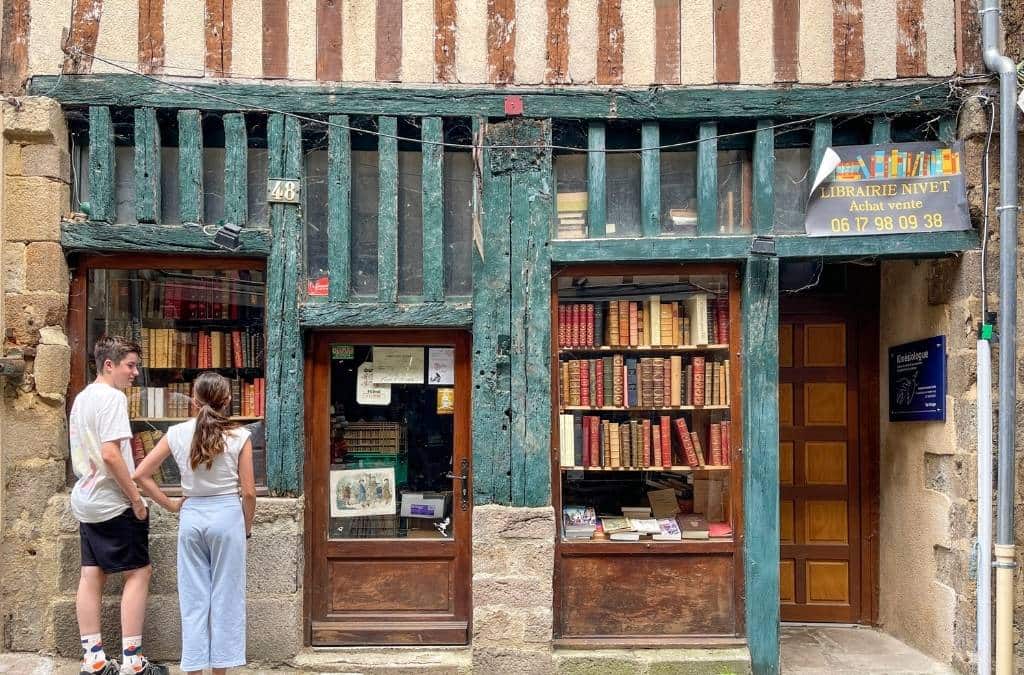
Is Limoges worth visiting?
Table of Contents
In a word, yes, Limoges is a beautiful city, full of character and charm with a long and colourful history.
There has been a city standing in the place where Limoges now stands for thousands of years. It was settled by the Romans who built villas, baths and tunnels that once connected the town. During the Middle Ages it grew rapidly and was later home to some of France’s most notable painters including Renoir, who was born here, and literary greats including Balzac and Molière.
In 1768 kaolin – the soft white clay that is an essential ingredient in the manufacture of china and porcelain – was discovered near Limoges, kickstarting the porcelain industry for which the city has been known ever since.
Porcelain still plays an important role in the city’s identity and there are various porcelain manufacturers that you can visit. But there’s much more to do besides from entertaining city tours and some great museums to an excellent wildlife park, a fun aquatic centre, a vibrant street food market during summer months and much more.
This guide has been put together for families visiting Limoges, however, it can be used by all travellers as it highlights all the best things to do in Limoges.
Let’s Go: Nouvelle-Aquitaine!
You may also enjoy the following posts:
- A fun-filled summer in France’s Belleville Valley
- How to plan a fun family ski holiday to Les Arcs
- The 20 best ski resorts in France for families (2024)
- Here’s why the Alpine French School will help you learn French
- 10 fun reasons to spend your summer in Les Gets, France (2024)
Limoges Three Day Itinerary
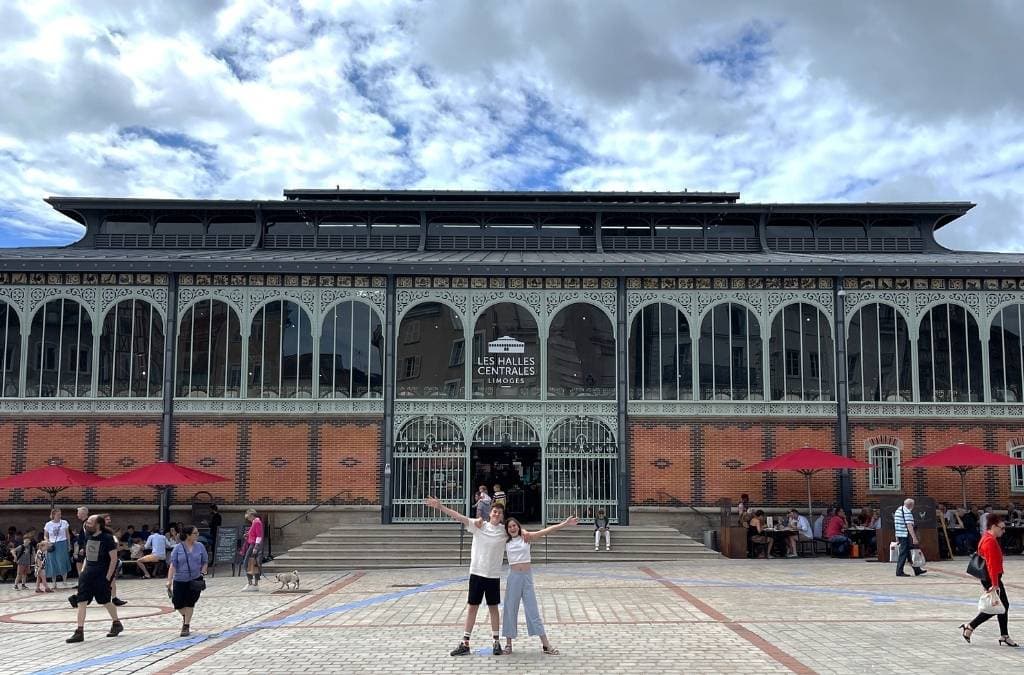
The beauty of Limoges is that it’s so easy to get around and you can easily see the best of what the city has to offer in a few of days. Of course if you have longer then there’s plenty more to do too! You can also combine a trip to Limoges with exploring elsewhere in the Nouvelle Aquitaine region.
Day 1 in Limoges
Start your trip to the French city of Limoges with a tour around the city centre on a Tuk Tuk! The electric Tuk Tuk is a brilliant way to get your bearings, see some of the main sights and learn a little about the history the city.
Head to the Quartier de la Boucherie, the old Butcher’s Quarter, and wander around. You will have passed through here on your Tuk Tuk tour but wandering on two feet allows you to explore this ancient neighbourhood in more detail.
Enjoy lunch in town; we loved our lunch at L’Irlandais restaurant, an Irish pub located not far from the Saint-Etienne Cathedral and the Musee des Beaux-Arts de Limoges. The food is excellent serving everything from mighty hamburgers and fish and chips to delicious tuna tartare with homemade fries.
If you are visiting Limoges during the summer and you are in Limoges with kids then spend the afternoon at L’Aquapolis. This vast swimming pool complex sits on the outskirts of town and is a great place to spend an afternoon (or even a day) with children. During the summer months they put up enormous inflatable slides in the garden.
Enjoy dinner at one of the many great restaurants in Limoges, we particularly enjoyed Les Échoppes Gogaille, a lively restaurant specialising in seasonal dishes with good local products. They also make amazing metre-long eclairs!
Overnight: Have a look at our recommended accommodation options in Limoges below.

Day 2 in Limoges
Start your day at the Musée et Jardins Cécile Sabourdy (Cécile Sabourdy Museum and Gardens). Located in the villages of Vicq-sur-Breuilh, less than 30 minutes from Limoges, the museum is a really interesting project both for the art it represents and the role its played in bringing life back to this village. The museum runs workshops for kids during school holidays.
Back in Limoges, head to Les Halles Centrales, Limoges’ beautiful central market hall. Built between 1885 and 1889 it’s a stunning building. It’s the place to go for food shopping – there are lots of stalls selling fresh produce – and for lunch. Make sure you get there early to enjoy a delicious lunch at Les Saveurs Limousines.
After lunch go to the Limoges Aquarium, a small but informative aquarium in the heart of town that houses a large number of rescue fish and turtles.
Once you’ve finished at the aquarium, travel to the Ateliers Arquié, which produces porcelain. You can join a tour which takes you through the porcelain production process from start to finish.
For dinner you should go to La Friche des Ponts, a fun and lively food market set up the banks of the Vienne river during summer months. There are dozens of food trucks selling food from all over the world.

Day 3 in Limoges
Spend your third day in Limoges at Reynou Zoo. Located a 15 minute drive from the centre of town this wildlife park is excellent and a must-see attraction, particularly if you are visiting Limoges with kids. The setting is lovely set in a 100 acres of forested land and conservation is key. Join a tour with one of the guides and learn more about the animals, and help feed them too.
Overnight at the wonderful Les Lodges du Reynou, the wildlife park lodges, and enjoy dinner and breakfast with the resident giraffes!
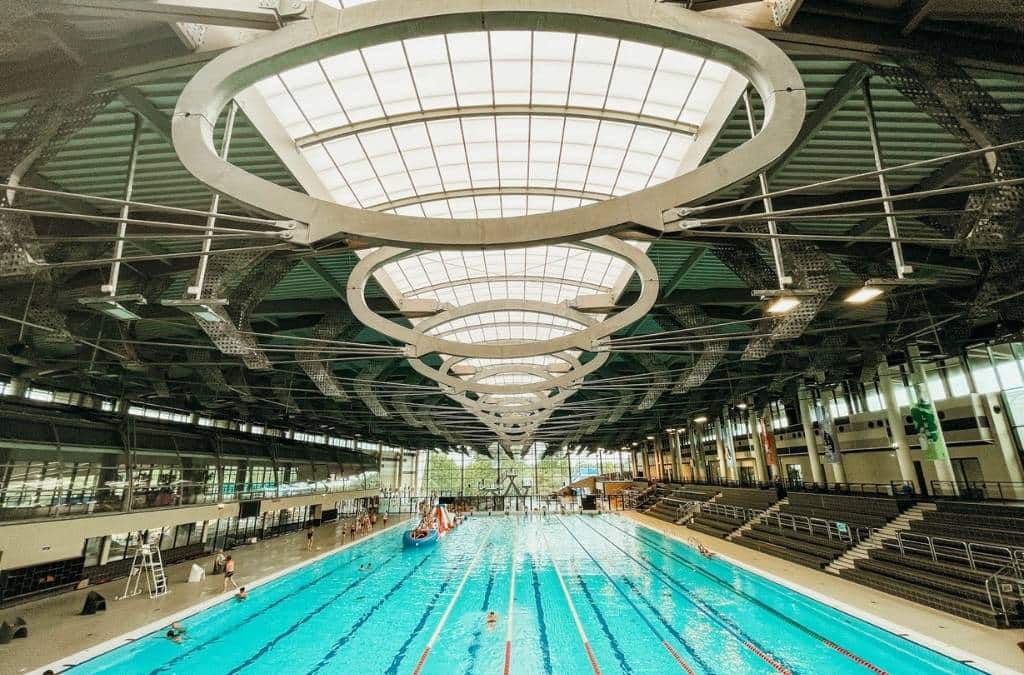
The best things to do in Limoges
The following are what we believe are the best things to do in Limoges, whether you are visiting as a family or not. It includes all the best places and activities that we enjoyed as well as a handful of destinations that we’ve bookmarked for our next trip to the city.
The Tuk Tuk Tour of Limoges
Run by the same company that run the the Petit Train Touristique de Limoges, the white tourist train that ferries visitors through the streets of Limoges, the Tuk Tuk tour was one of the highlights during our time in the city.
Lionel, our driver, is also the owner of the company and a huge character – the hour-long tour of Limoges inevitably takes longer than scheduled because he happens to know almost everyone in the city!
There’s an audio guide but in truth the audio gets a little lost as Lionel jokes and tells stories while you whizz around the city. During our tour Lionel pointed out where Renoir was born, the oldest pharmacy in Limoges and the aptly named street, Mont a Regret; prisoners would once walk up this street towards the execution ground.
It’s a truly wonderful way to explore the city.
Find out more information on the official website here.
Quartier de la Boucherie
The old butcher’s quarter, so-called because these narrow streets were once lined with butcher’s shops, was earmarked for destruction in the 1970s but fortunately the neighbourhood was saved. Today it’s one of the most colourful areas in the city, a pedestrianised zone lined with timber framed houses that are today restaurants, cafes and shops.
The Traditional Butcher’s House (Maison Traditionnelle de la Boucherie) is one of 52 houses built in the early 13th century that has been kept as a museum, giving visitors an insight into the day to day life of a butcher; slaughtering, selling and cooking meats on the ground floor and living upstairs. It’s open July and August, Tuesday to Saturday from 2pm to 6pm so make sure to time your visit for when it’s open.
Almost directly opposite the museum is the Chapelle Saint-Aurélien dedicated to the patron Saint of Butchers.
Every year on the third Friday in October, La Frairie des Petits Ventres is celebrated in the quarter. Created in 1973, the event celebrates the guild of butchers and welcomes their return for a day of feasting and festivities. Tens of thousands of people squeeze onto the roads of this old neighbourhood. Dishes on offer by the many butchers’ shops include mutton tongue, veal head and strawberries, potato pâté and some sweet treats too!
Limoges Old Town
The old butcher’s quarter is not the only corner of the old town – or high town (Ville Haute) – worth exploring. The Cour du Temple (Temple’s Court) is a pretty paved courtyard with half timbered houses, a granite mansion and an elegant Renaissance-style stairway.
L’Église Saint-Michel-des-Lions (Church of St. Michel des Lions), is one of the city’s most recognisable churches, famous for the enormous copper ball that sits on top of its 65m-high spire. The Cathédrale St-Étienne (Limoges Cathedral) dates back to the 13th Century and combines Gothic, Renaissance and Romanesque architecture styles.
The Mairie (the town hall, also known as the ‘Hôtel de Ville’ in French) sits on the fringes of the historic old town. It was built between 1876 and 1883, and modelled on the Hotel de Ville in Paris.
The square in front of the hall is home to a number of benches (some made from porcelain), flower borders and the Fontaine des Barres, a fountain that was constructed out of pink granite, bronze and porcelain. The four little boys on the fountain represent the different phases of the porcelain industry: drawing, moulding, sculpting and decorative painting.
Gare de Limoges-Bénédictins
If you take the Tuk Tuk tour of the city then the Gare de Limoges-Bénédictins, the Limoges train station, will be included on your route. Equally, if you travel to Limoges by train, this is where you’ll arrive.
The main railway station of Limoges is said to be one of the most beautiful railway stations in France and was listed as a Historical Monument in 1975. Unlike typical train stations, this one is built above the railway lines and not alongside them.
It’s famous for its architectural styles that blend Art Deco and Art Nouveau, its clock tower (with four clock faces that always run two minutes ahead of time to ensure travellers don’t miss their trains!), and its domed concourse, which features sculptures symbolising one of the four French provinces served by the Paris-Orleans railway company.
Les Halles Centrales
The central covered market of Limoges is located on Place de la Motte and is a beautiful building that was built between 1885 and 1889. The two engineers behind the construction studied the Eiffel technique, which is why the steel structure with triangulated frames might look familiar. Incredibly, the outdoor 1,200 square metre brick wall does not have a single indoor pillar.
The market hall was completely renovated in 2019 and is today home to more than 40 stalls who sell a wide variety of local produce from cheese and vegetables to meats and beer.
Also inside is a beautiful frieze, made up of 328 porcelain tiles, showcasing products sold on site.
Enjoy lunch here at Les Saveurs Limousines, an excellent restaurant that is always busy – make sure you arrive at 12pm!
The restaurant serves a handful of dishes, including some excellent quiche and salads, and everything is made from the produce that they have in stock there and then. As soon as they run out of produce, it’s taken off the menu for the day. Nothing is wasted and everything is very local. Our lunch here was a real highlight of our time in Limoges.
The market is open Monday through Saturday from 6am to 2pm and Sundays from 7am to 1pm.
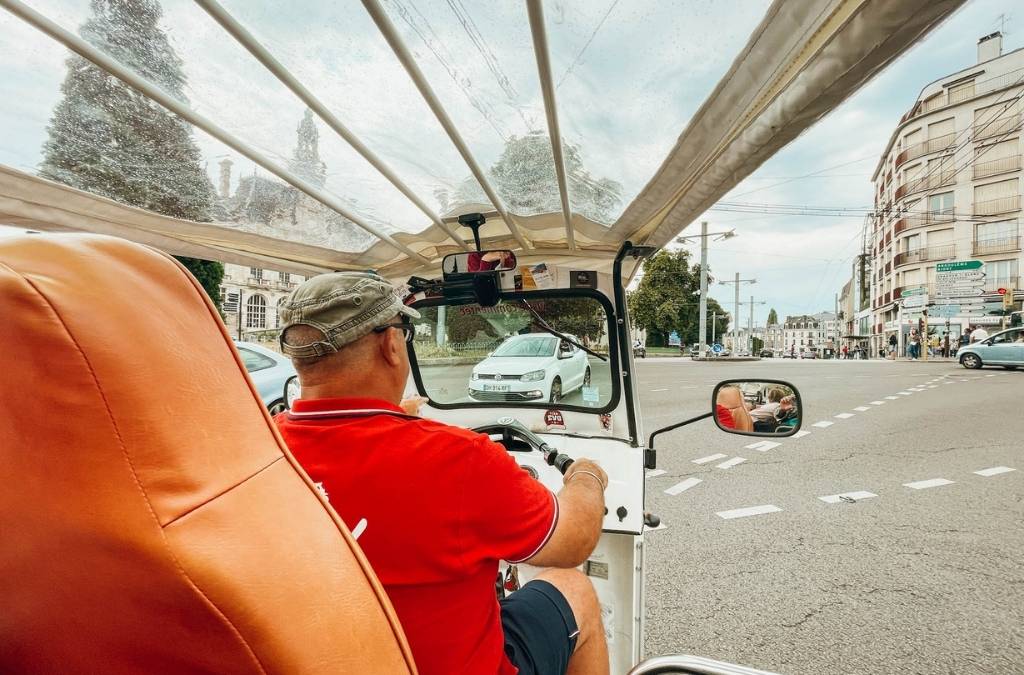
The Limoges Aquarium
The Limoges Aquarium is housed in an incredibly unique setting; a former underground and vaulted reservoir that was built under orders from Napoleon III to keep the town safe from possible cholera epidemics.
The Aquarium is home to a diverse range of indigenous fish as well as species from all over the world. What’s particularly interesting about this aquarium is that they act as a refuge for unwanted fish and turtles that have been cast aside by pet owners – apparently at least one turtle and five fish are donated every week.
It’s a fun place to visit, particularly if you are there for feeding time. There’s also the chance to have the resident “doctor fish” nibble on your hands!
See more on the Limoges Aquarium website.
The Limoges Ceramic Route
One of the most interesting things about Limoges is that you will find the porcelain for which the city is so famous everywhere as you wander the streets. There are benches and road markers inlaid with porcelain as well as fountains decorated with porcelain pieces.
In addition to the fine white porcelain that Limoges produces, the city is famous for its blue porcelain and this too can be seen around the city.
A fun way to explore the city and discover some of its famous porcelain is to follow the Tourist Office’s themed Ceramic Trail walk. The route, which is available online, takes visitors through the city pointing out various pieces of blue porcelain as you go, from small pieces of cornicing to an entire rainwater pipe, all created from blue porcelain.
You can follow the trail here.
Ateliers Arquié
To truly get an understanding of how Limoges porcelain is produced you need to go the source. There are a number of porcelain producers who open up their warehouses for tours, including Ateliers Arquié where we visited and enjoyed a brilliant introduction to this unique art form.
The factory is located in a large workspace that had previously been a tannery and later a garage. It was bought in 2018 and transformed into its current iteration, the Ateliers Arquié. Not long after purchasing the property, the company invited thirty street artists to paint the warehouse, adding fun, vibrant murals across the previously grey walls.
Tours are held three times a week and take visitors through the process of making a small porcelain dog, from start to finish. It’s a wonderful introduction to Limoges porcelain and ends in the room where all the decorating takes place, the majority of it by hand.
And, if you’re wondering how to know if a piece of porcelain is truly Limoges porcelain or not, hold up a flame or light behind the piece and if you can see the glow of the light on the other side, then the porcelain is authentic.
Visit the Atelier Arquie website here.
L’Aquapolis
L’Aquapolis is a huge public swimming pool complex in Limoges. As well as an Olympic sized swimming pool it has a dedicated diving pool area, an area with a wave machine and lazy rivers, and an outdoor swimming pool. During the summer months they set up giant inflatable slides in the garden and there’s also a mini inflatable assault course indoors too. It’s the perfect way to spend an afternoon whether the sun is shining or on a rainy day.
Make sure to pack appropriate swimwear (men must be wearing briefs style or cycling short style shorts, board shorts are not allowed). I’d highly recommend bringing some rubber flip-flops for navigating the communal shower and changing areas.
Visit L’Aquapolis website here.
Cécile Sabourdy Museum and Gardens
Located in the village of Vicq-sur-Breuilh, just 20 minutes from the centre of Limoges, is the Musée et Jardins Cécile Sabourdy (The Cécile Sabourdy Museum and Gardens). The museum, housed in an 18th century presbytery, is dedicated to Naïve art (sometimes called “raw art”) and is named after a local painter Cécile Sabourdy. Sabourdy was the daughter of farmers and had no formal art training but a natural gift for painting what she saw around her.
Today the museum has a permanent exhibition on the ground floor dedicated to her work as well as other Naïve artists. Temporary exhibitions featuring a range of artists take place on the first and second floors and change every six months.
What’s especially interesting about the museum is how it has breathed new life into the village. As with many small towns and villages around the world, locals had moved away to the city meaning that local business including restaurants and cafes had closed. It was, as our guide explained, “a village where people went to sleep.” Now, however, thanks to the museum, visitors are coming to the village of Vicq-sur-Breuilh.
Today the museum hosts a number of interest events including children’s activities in La Cabane. A twice monthly market is held here during the summer months and the museum organises workshops and tours of the large garden, including the section that’s home to medicinal plants. It’s a really interesting museum and the village itself is very pretty so it’s well worth spending a morning here.
Visit the Cecile Sabourdy Museum website here.

Parc Zoo du Reynou
The excellent Parc Zoo du Reynou is just 15 minutes from Limoges city centre and a wonderful way to spend a day. Set around a 19th century castle within 100 acres of forest, the wildlife park is home to 600 animals and conservation is at the heart of its practices.
There are a number of ways to enjoy the zoo in addition to buying tickets and exploring on your own. Visitors can choose to play Zoo Explorers and, accompanied by a member of the team, discover the various missions of the zoo. Or, you can choose to become a Zoo Keeper for the day and help take care of the animals.
We joined our highly knowledgeable guide, Manon, who was brilliant at teaching us not only about the animals that call the park home but how Parc Reynou strives to educate visitors and help with animal conservation. She also taught us lots of fun animal facts including that red pandas can climb down trees face first because their ankles rotate 180 degrees!
Among the many animals we saw, highlights included the resident otters, the park’s two red pandas and the Visayan warty pigs sporting the kind of Mohawks usually only seen on London punks. We also helped to feed the meerkats and the two sharp toothed Tonkean macaque called Kiss and Techno.
Visit the Parc Reynou website here.
La Friche des Ponts
Although not technically a tourist sight, La Friche des Ponts deserves its own mention because it’s such a fun thing to do.
During summer evenings, from Tuesday to Saturday, dozens of food trucks pull up along the banks of the River Vienne selling food from all over the world. Communal tables and chairs are set up in the middle under strings of outdoor lights. Food options include everything from tacos and burgers to empanadas and ceviche. There are a handful of bars too.
The atmosphere is fun and laidback and all ages gather on balmy summer evenings to eat, drink and be merry. I highly recommend visiting if you are in Limoges during the summer months.
Additional sights to see in Limoges
The following are sights that we have highlighted for the next time we are in the city:
The Musée National Adrien Dubouché: Home to the the largest collection of Limoges porcelain in the world.
The Jardin Botanique de l’Evêché: The Botanical Gardens of Limoges are spread over five hectares. Located near the cathedral it’s one of the city’s most beautiful gardens.
Musée des Beaux-Arts: The Limoges Museum of Fine Arts is housed within the former Bishop’s Palace dating back to the 18th century. Among the many artworks are hundreds of enamel work produced in Limoges dating back to from the Middle Ages to present day.
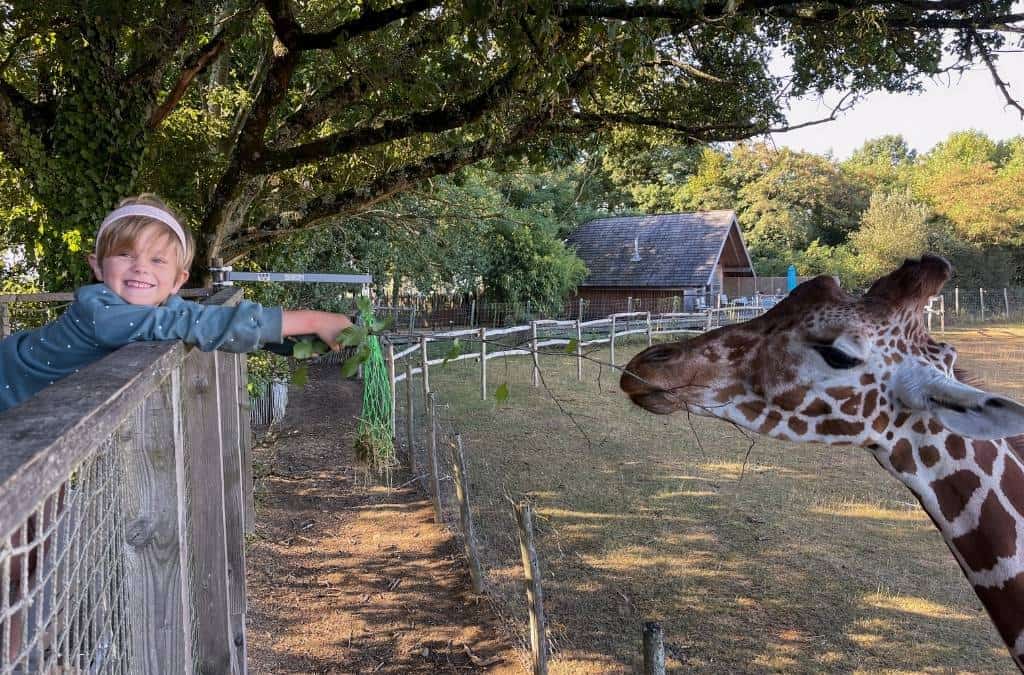
Where to stay in Limoges
We stayed in the following two properties in Limoges.
Dupain & Dubeurre
Run by two brothers is this delightful guest house that enjoys eight bedrooms. All rooms come with a kitchen, perfect if you’re travelling with kids.
We stayed in Raspoutine, on the top floor, which has two double bedrooms and a sofa bed in the living room.
Breakfast is included and, during the warm months, is served outside on the sunny terrace.
It’s a lovely place to stay and just a short walk to the historic center.
Visit the Dupain & Dubeurre website here.
Les Lodges du Reynou
Attached to the Parc Zoo du Reynou are the fantastic Lodges du Reynou. There are six lodges to choose from, each perched on stilts on the edge of an animal enclosure that’s home to a number of animals including ostrich and some very characterful giraffe.
Staying overnight in one of the lodges is a truly unique experience and a wonderful thing to do if you’re visiting Limoges with kids. Even if you don’t have children in tow, however, they’re a great place to stay and there are lodges that cater just for couples. There is also a lodge for any travellers with mobility issues. All lodges come with a small kitchen as well as a living / dining area.
No sooner had we checked in to our Safari Lodge then Jimbo (pronounced “yimbo”) the giraffe sauntered over looking for something to eat. Four giraffe live here including Mundoo, two baby giraffe and Jimbo, who is definitely the most friendly. Or perhaps that should be, the most greedy.
Staff members bring branches for you upon arrival, and the following morning, so that you have something to feed Jimbo when he comes wandering over. Breakfast is delivered in a basket and you can eat out on your terrace, watching the animals roam around in front of you. It was a highlight of our time in Limoges!
Discover more about the Lodges du Reynou here.
How to get to Limoges
Located in southwest-central France, Limoges is easily reached by train, plane and car.
Plane
You can fly direct to Limoges from a number of airports in the UK including London Stanstead, Bristol and Manchester.
In Bordeaux, the Bordeaux-Merignac International Airport (BOD) receives direct national and international flights including flights from all London airports.
Train
You can travel by train from London St-Pancras to Limoges Bénédictins, arriving in the city’s fabulous train station. Trains usually depart once a day from London and take around 7 hours.
There are also trains running from London to Bordeaux, changing in Paris. From Paris, high speed trains run to Bordeaux in just two hours.
Car
It’s easy to drive around the Nouvelle-Aquitaine region and takes just under three hours to drive from Bordeaux to Limoges.


